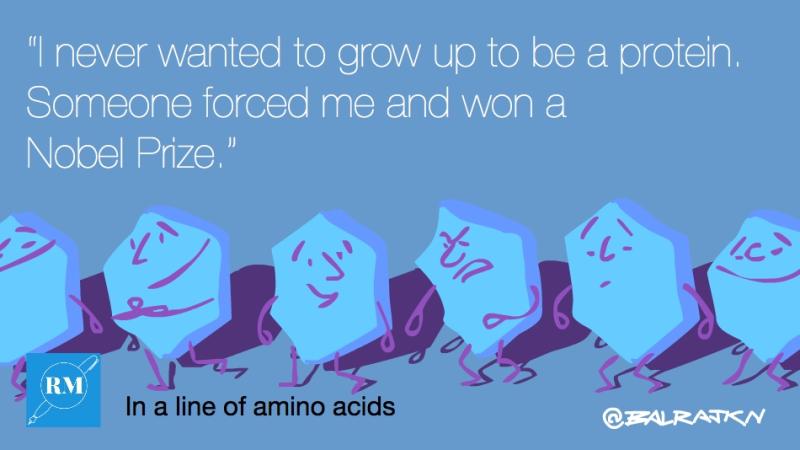
Most of us have seen diabetics take insulin injections. Wasim Akram was an insulin dependent diabetic, and at the same time, a threatening fast bowler.
Insulin is a protein produced in our bodies by the pancreas. In earlier days, insulin was extracted from the pancreas of cattle, in a tedious process that yielded just a few micrograms per pancreas.
To meet increasing demands for insulin, chemists went down to brass tacks. Insulin is a protein; a structurally perplexing molecule with several twists, bends and crevices. Mimicking the structure of a protein in a test tube is a daunting task -- even a small oversight can give rise to a non-functional protein.
However complex the final form of a protein, it is ultimately made of building blocks called amino acids. Making a protein has to start with adding amino acids sequentially to form a chain. Picture adding different sized microscopic beads along a string one at a time. The beads are the amino acids and the necklace formed is the protein. The only difference is that once the protein is formed it folds in multiple ways depending on the nature of the beads, unlike a necklace.
Once chemists had worked out this theory, it seemed like a simple task of stepwise addition of “microscopic beads along a string”.
Easier said than done.
Imagine you have an extremely large vessel with these small necklaces floating around. Only a few of them out of a billion will have the right sized beads in the right order. How would you fish out the necklace you want?
This was the problem that Bruce Merrifield addressed. He was awarded a Nobel Prize for it in 1984.
He adopted a simple approach whereby he decided to fix the protein on one end, adding amino acids to the other end. It is like adding a hook to one end of a string and pinning it to a large anchor before adding beads to the other end. By doing so, the protein does not drift away and takes the bait.
Bruce Merrifield’s idea revolutionised peptide synthesis by increasing the yields of proteins manifold, reducing costs of separation as well as purification. Insulin could finally be synthesized chemically in large amounts without having to turn to animal sources.





